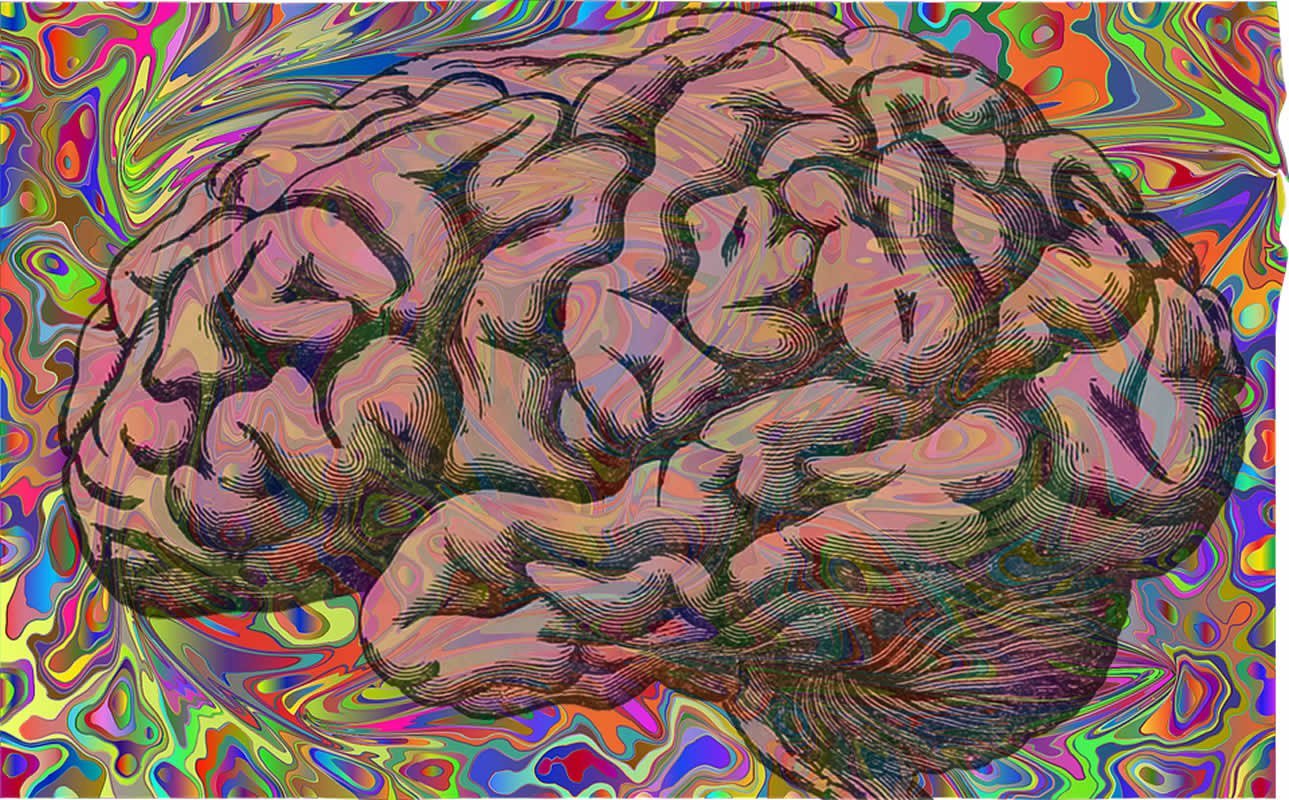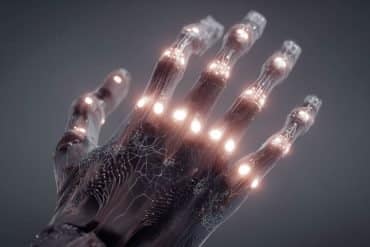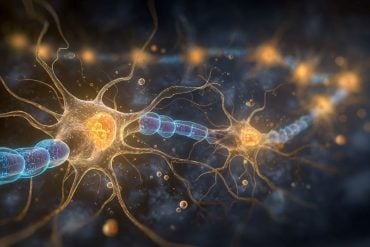Summary: DMT, an active compound of the psychedelic Ayahuasca, is naturally occurring in the mammalian brain, researchers have discovered. The study revealed DMT levels increased significantly in the rat visual cortex following cardiac arrest.
Source: University of Michigan
In the past few years, thrill-seekers from Hollywood, Silicon Valley and beyond have been travelling to South America to take part in so-called Ayahuasca retreats. Their goal: to partake in a brewed concoction made from a vine plant Banisteriopsis caapi, traditionally used by indigenous people for sacred religious ceremonies. Drinkers of Ayahuasca experience short-term hallucinogenic episodes many describe as life-changing.
The active ingredient responsible for these psychedelic visions is a molecule called dimethyltryptamine (DMT). For the first time, a team led by Michigan Medicine has discovered the widespread presence of naturally-occurring DMT in the mammalian brain. The finding is the first step toward studying DMT– and figuring out its role — within the brains of humans.
“DMT is not just in plants, but also can be detected in mammals,” says Jimo Borjigin, Ph.D., of the Department of Molecular and Integrative Physiology. Her interest in DMT came about accidentally. Before studying the psychedelic, her research focused on melatonin production in the pineal gland.
In the seventeenth century, the philosopher Rene Descartes claimed that the pineal gland, a small pinecone-shaped organ located deep in the center of the brain, was the seat of the soul. Since its discovery, the pineal gland, known by some as the third eye, has been shrouded in mystery. Scientists now know it controls the production of melatonin, playing an important role in modulating circadian rhythms, or the body’s internal clock. However, an online search for notes to include in a course she was teaching opened Borjigin’s eyes to a thriving community still convinced of the pineal gland’s mystical power.
The core idea seems to come from a documentary featuring the work of researcher Rick Strassman, Ph.D. with the University of New Mexico School of Medicine. In the mid-1990s, he conducted an experiment in which human subjects were given DMT by IV injection and interviewed after its effects wore off. In a documentary about the experiment, Strassman claims that he believed the pineal gland makes and secretes DMT.
“I said to myself, ‘wait, I’ve worked on the pineal gland for years and have never heard of this,'” she said. She contacted Strassman, requesting the source of his statement. When Strassman admitted that it was just a hypothesis, Borjigin suggested they work together to test it. “I thought if DMT is an endogenous monoamine, it should be very easy to detect using a fluorescence detector.”
Using a process in which microdialysis tubing is inserted into a rat brain through the pineal gland, the researchers collected a sample that was analyzed for — and confirmed — the presence of DMT. That experiment resulted in a paper published in 2013.

However, Borjigin was not satisfied. Next, she sought to discover how and where DMT was synthesized. Her graduate student, Jon Dean, lead author of the paper, set up an experiment using a process called in situ hybridization, which uses a labeled complementary strand of DNA to localize a specific RNA sequence in a tissue section.
“With this technique, we found brain neurons with the two enzymes required to make DMT,” says Borjigin. And they were not just in the pineal gland.
“They are also found in other parts of the brain, including the neocortex and hippocampus that are important for higher-order brain functions including learning and memory.”
The results are published in the journal Scientific Reports.
Her team’s work has also revealed that the levels of DMT increase in some rats experiencing cardiac arrest. A paper published in 2018 by researchers in the U.K. purported that DMT simulates the near death experience, wherein people report the sensation of transcending their bodies and entering another realm. Borjigin hopes to probe further to discover the function of naturally occurring levels of DMT in the brain — and what if any role it plays in normal brain functions.
“We don’t know what it’s doing in the brain. All we’re saying is we discovered the neurons that make this chemical in the brain, and they do so at levels similar to other monoamine neurotransmitters.”
Source:
University of Michigan
Media Contacts:
Kelly Malcom – University of Michigan
Image Source:
The image is in the public domain.
Original Research: Open access
“Biosynthesis and Extracellular Concentrations of N,N-dimethyltryptamine (DMT) in Mammalian Brain”. Jon G. Dean, Tiecheng Liu, Sean Huff, Ben Sheler, Steven A. Barker, Rick J. Strassman, Michael M. Wang & Jimo Borjigin.
Scientific Reports. doi:10.1038/s41598-019-45812-w
Abstract
Biosynthesis and Extracellular Concentrations of N,N-dimethyltryptamine (DMT) in Mammalian Brain
N,N-dimethyltryptamine (DMT), a psychedelic compound identified endogenously in mammals, is biosynthesized by aromatic-L-amino acid decarboxylase (AADC) and indolethylamine-N-methyltransferase (INMT). Whether DMT is biosynthesized in the mammalian brain is unknown. We investigated brain expression of INMT transcript in rats and humans, co-expression of INMT and AADC mRNA in rat brain and periphery, and brain concentrations of DMT in rats. INMT transcripts were identified in the cerebral cortex, pineal gland, and choroid plexus of both rats and humans via in situ hybridization. Notably, INMT mRNA was colocalized with AADC transcript in rat brain tissues, in contrast to rat peripheral tissues where there existed little overlapping expression of INMT with AADC transcripts. Additionally, extracellular concentrations of DMT in the cerebral cortex of normal behaving rats, with or without the pineal gland, were similar to those of canonical monoamine neurotransmitters including serotonin. A significant increase of DMT levels in the rat visual cortex was observed following induction of experimental cardiac arrest, a finding independent of an intact pineal gland. These results show for the first time that the rat brain is capable of synthesizing and releasing DMT at concentrations comparable to known monoamine neurotransmitters and raise the possibility that this phenomenon may occur similarly in human brains.






